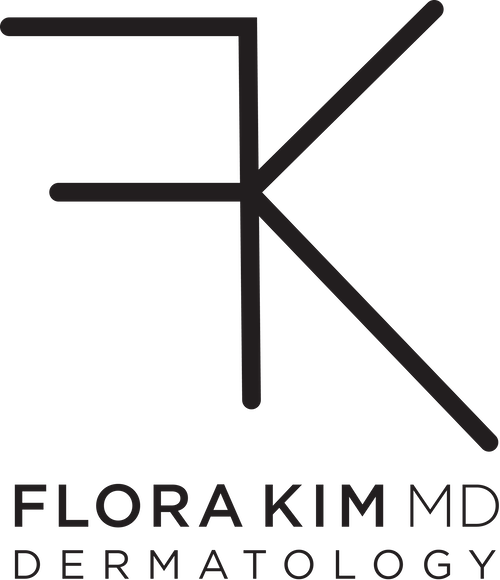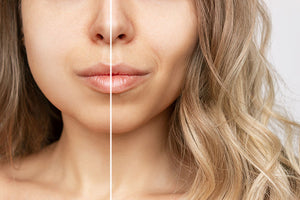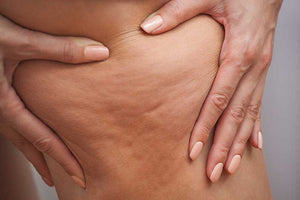The Difference Between Retinoids and AHAs/BHAs

Retinoids and AHAs /BHAs (alpha/beta hydroxy acids) both do wonders for your skin. However, the skincare superheroes work very differently. There are plenty of reasons to add both to your routine, but there are a few rules to follow, especially if your skin is new to these active ingredients.
What are retinols and retinoids?
Retinols and retinoids are in the vitamin A family and are dermatology favorites because they are potent natural regulators of cellular activities, including cell growth and differentiation, meaning they regulate and optimize the skin cell lifecycle. The multitaskers also effectively decrease hyperpigmentation (including brown spots, sun spots, melasma, and scars), increase collagen production, soften fine lines, and can even treat acne or breakouts.
The main difference between retinols and retinoids is strength or potency. Retinols are found in over-the-counter products as opposed to retinoids that are strictly prescription medications. Retinols have a lower concentration of the active retinoic acid ingredient while RX retinoids can potentially lead to excessive dryness, flaking/peeling, and redness if used improperly. Make sure you always wear sunscreen for protection especially when using retinoids. Please read about Retinoids for a more in depth discussion.
What are AHAs and BHAs?
Simply put, AHAs and BHAs are topical acids, that can dissolve and remove the top dull layer of dead skin to reveal new glowing, healthy skin. AHAs include glycolic and lactic acids, while BHAs include beta-hydroxybutyric acid and tropic acid. Some acids are both AHAs and BHAs, such as malic and citric acid. Salicylic acid is sometimes categorized as a BHA, but this is incorrect because in SA, both the hydroxyl and the carboxyl groups are directly attached to an aromatic benzene ring and both exhibit acidic properties.
Keep in mind that the higher the percentage, the stronger the acid will be, and some are stronger and others gentler. That means your skin type and skin condition should determine which acid type you choose. For example, those with sensitive skin or rosacea should opt for a milder acid decreased frequency, as well as decreased duration of contact with your skin to avoid causing damage.
How retinoids and AHAs and BHAs work differently
They each have different functions, so both can be beneficial as part of your healthy skin routine. Essentially, retinols and retinoids help with cell turnover while AHAs and BHAs are exfoliators. To understand the difference between the two, think of exfoliation as actively removing the top dead layer of skin, while cell turnover relates to a skin cell’s life or maturation journey from birth to death, and as the cell moves further up and up until it is shed.
The best way to incorporate retinoids and AHAs and BHAs into your PM skincare routine
For retinoids, start with the most gentle products, such as over-the-counter retinol formulations. I recommend Environ’s Retinol 3 one to three nights a week then every night. Slowly increase tolerability to prescription strength, starting with Tretinoin 0.025% cream one night a week and building up eventually to every night, before increasing the concentration to 0.05% and 0.1%. With retinoids, slow and steady wins the race!
Once you have built up a tolerance, retinoids can and should be used every night for best results. Exfoliation, on the other hand, does not need to be done daily. In fact, if you use too harsh of an exfoliant and too often, you will strip, irritate, and damage your skin instead of helping it. With exfoliation, there is such a thing as too much. I recommend exfoliating one to two times a week. You may find some exfoliating products that claim they are safe to use daily. This may be true, but may not be necessary. I am neutral on these.
Personally, I apply on my clean, dry face at night a pea-size amount of the prescription retinoid Altreno Lotion 0.05% (followed by a moisturizer), and I keep iS Clinical’s Tri-Active Exfoliating Mask in my shower and use it once a week. Another great option is Defenage’s 2- Minute Reveal Masque if you prefer to apply on dry skin.
If you exfoliate and then apply your retinoid—which is what I do once a week—then the penetration and thus efficacy of the retinoid will be enhanced, which is a good thing as long as your skin has built up a tolerability to the retinoid. Otherwise, you may see dry, red, flaky, irritated skin develop in the next day or two. If that happens, stop the retinoid (and definitely stop exfoliation) for a few days apply a healing and soothing product such as iS Clinical Sheald Recovery Balm until your skin returns to baseline.








